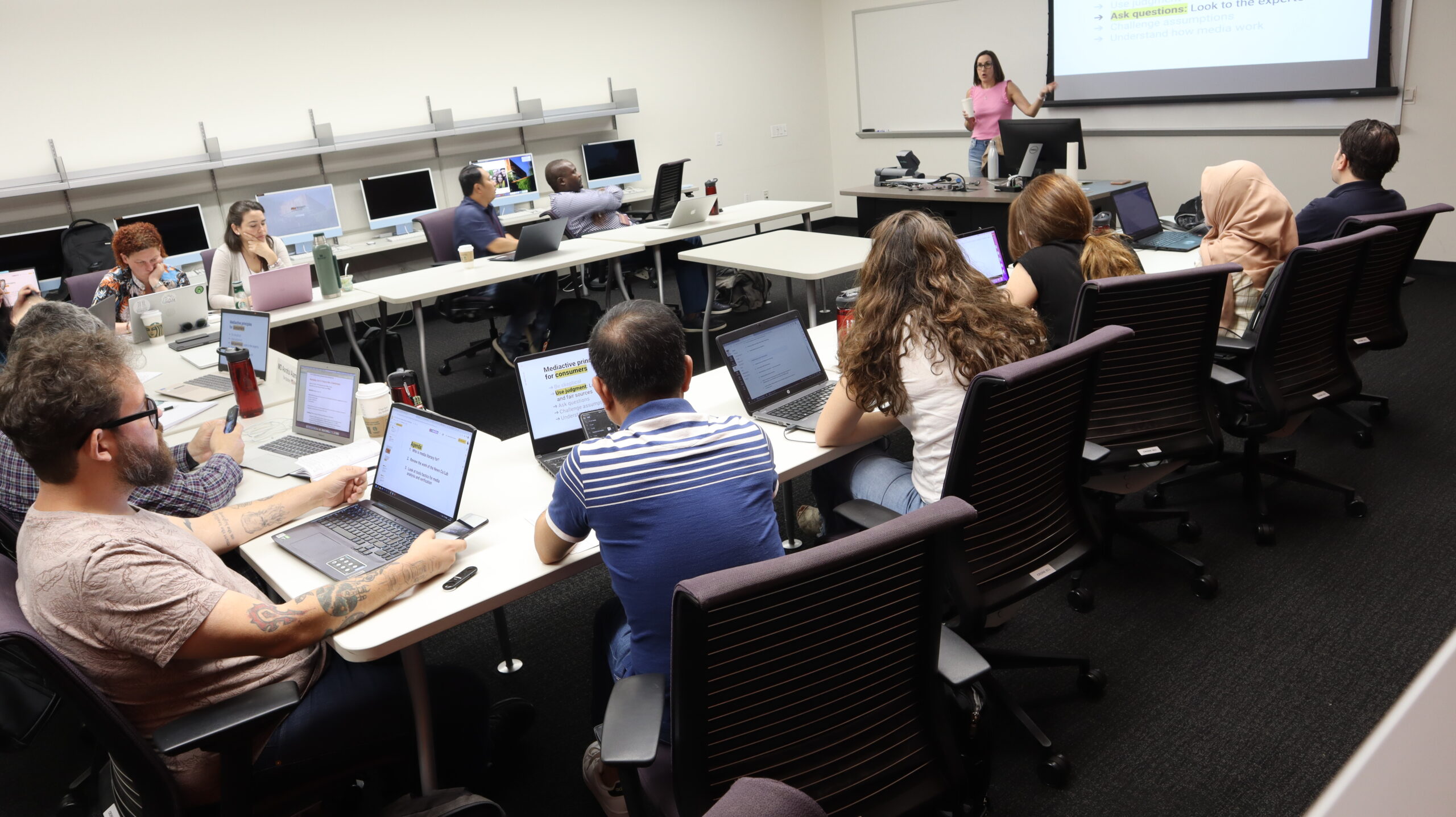It has been 10 days now since our experience (or should I say experiment?) started at Cronkite, here in Phoenix, Arizona. I like round numbers because they’re a great excuse to overthink our relationship with time and space. The weather gave us a break and the combination of these two things—and a stranger asking for directions to Fillmore St., which I could actually answer—made me think I am sort of a local, now.
That’s a good thing because, to me, establishing a routine is an important part of my learning process. Otherwise, everything is just a new thing to point out and post on Instagram (look everyone, it’s a coffee cup / a street sign / an elevator!). So with 10 days plus a feeling that I got how the weather works and some street names were key factors to just go to class somehow immersed.
But, of course, my routine safe zone was trespassed when Dr. Kristy Roschke changed our classroom. To me—always overthinking everything—it almost sounded like a pedagogical strategy to remind us that we are far, far away from a routine here. And in that mixed spirit, we started a more “hands on” approach on combating mis- and disinformation.
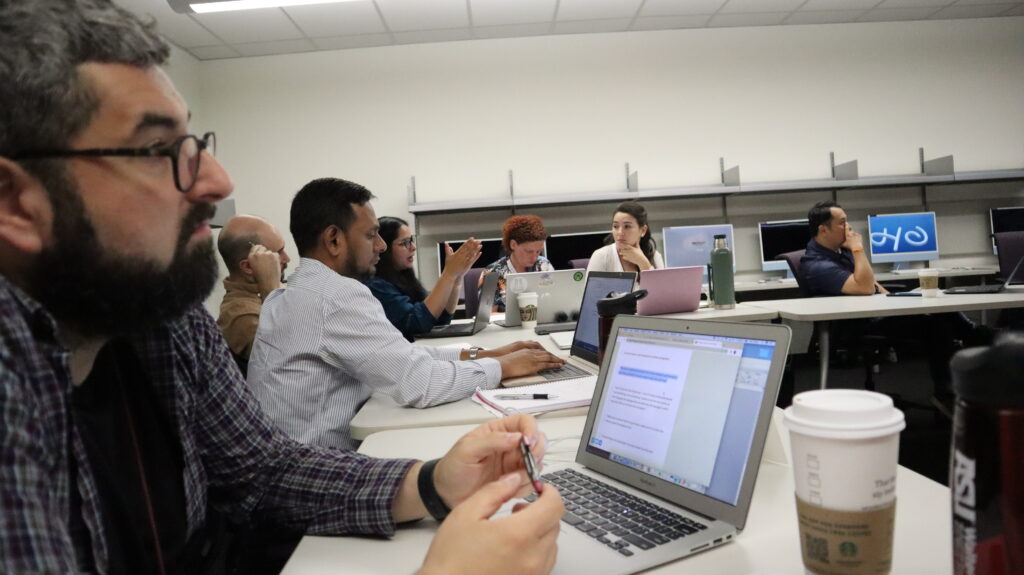
We were presented with 3 key questions to share with our students:
- Who’s behind the information;
- What’s the evidence? and
- What do other sources say?
Those three set the background to what Dr. Roschke introduced as “SIFT.” Quoting creator Mike Caulfield, this stands for: Stop – Investigate the Source – Find Better Coverage – Trace Claims, Quotes, and Media to the original context.
If there’s ever such a thing as poetic license for academic knowledge, I would probably change the order, so in Portuguese, my home language, the acronym could be read as “PIRE,” which translates to “go crazy.” But let’s not do that, at least just for now.
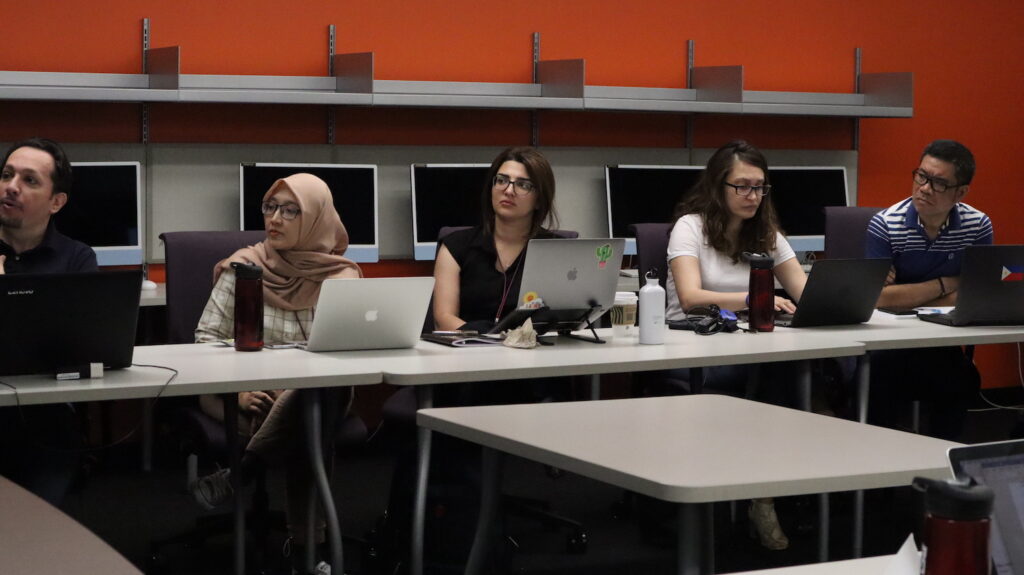
The hands-on part of the morning was to check media stories to see if we could find out if they were true or false. That led to a conversation on the very regulations on how people and politicians (yes, I put them in different categories) use digital media against the complex idea of free speech. It’s a very simple, yet elegant exercise to take to younger students in class: what basic tools, such as search engines, do we have to combat disinformation?
Also a fun exercise for those who binge-watch MTV’s Catfish.
Even after 10 days I still amaze myself with the cultural differences between 15 countries. Our exercise led to the funny question “why do so many people refer to themselves as doctors in the United States?” After all, a doctor was supposed to be a reliable source of information. Here, just like in Brazil, it became a strange way to build a sense of authority when someone works with health or law.
After lunch we were introduced to doctors (actual ones, in this case) Shawn Walker and Michael Simenone, from ASU and who are also part of the New America Initiative. They showed us a study they carried out on the influence of Parler—a social network unknown for most of us visiting scholars—on the January 6 insurrection in America. More important than the platform itself, they showed that research on smaller and more focused groups still produces important data.
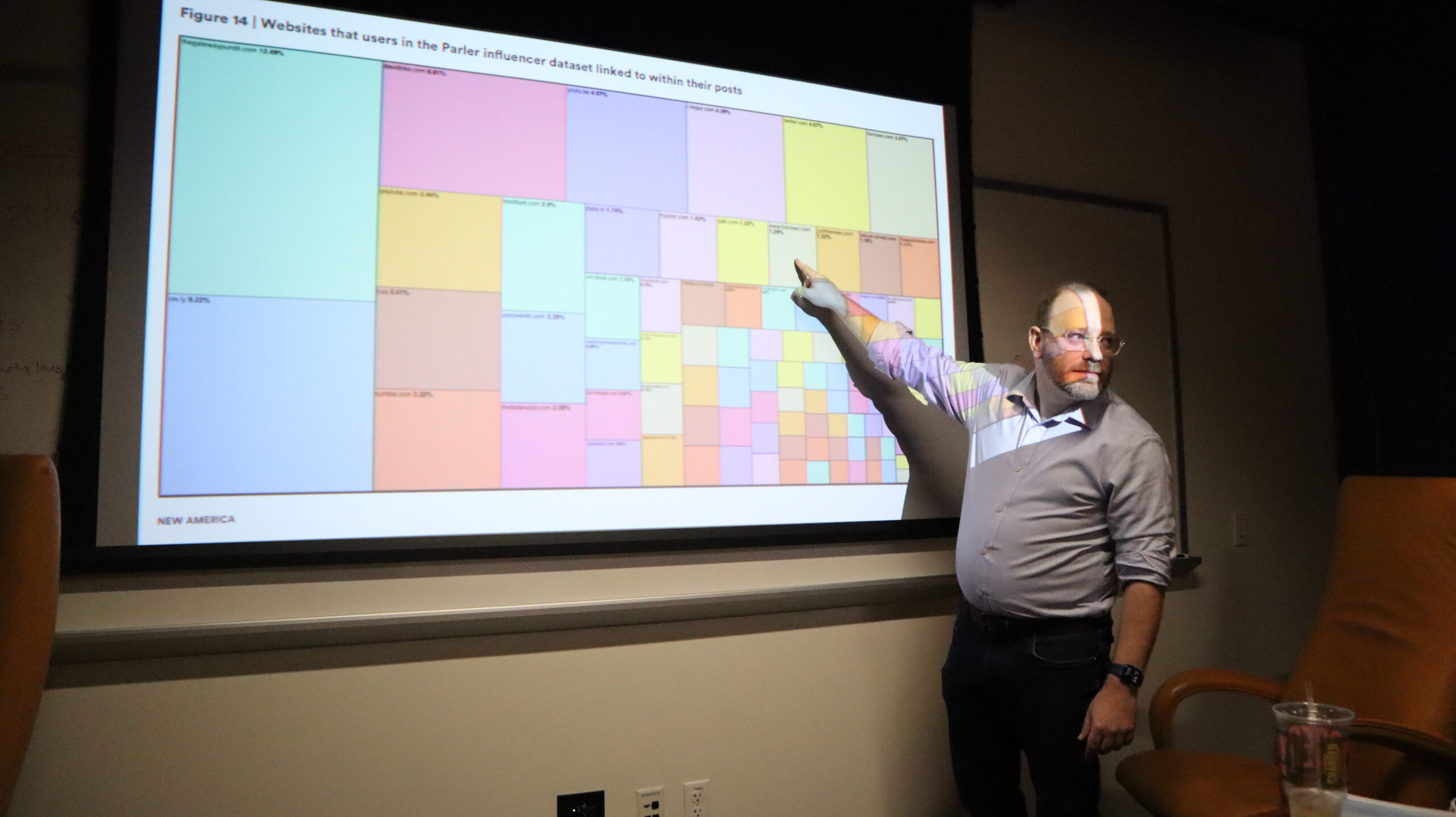
A quick digression: the presentation brought back some traumatizing memories about the Gephi software that I had to learn how to use during my Phd research on how Facebook debates generated more value on popular music than traditional music criticism.
Actually, not so much of a digression. The presentation introduced us to the importance of more shared research experience between journalists and information and data scientists. Perhaps a way to rethink the very newsroom model and who should take a part in the process of investigating stories. We were presented with a set of different tools, such as Newsguard and SMAT – the Social Media Analysis Toolkit.
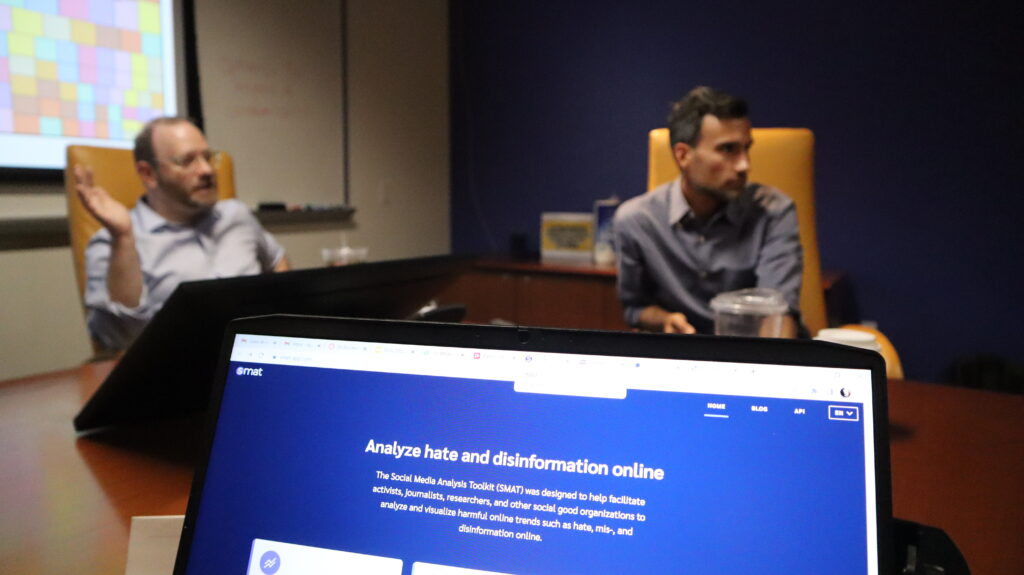
journalists and data scientists
With this, we were introduced to different ways to work with media literacy as we venture toward the end of our second week. At first, the very basic display of academic quotes and concepts; the experience of producing media; and now the skillset to analyze content in a more in depth way. Like in the past days, those were all presented as gateways moments, like a compass… showing which side to go for more information.
I’ve got a feeling that my computer notepad app (and also my keyboard) is starting to get desperate every time I open it to take notes.
